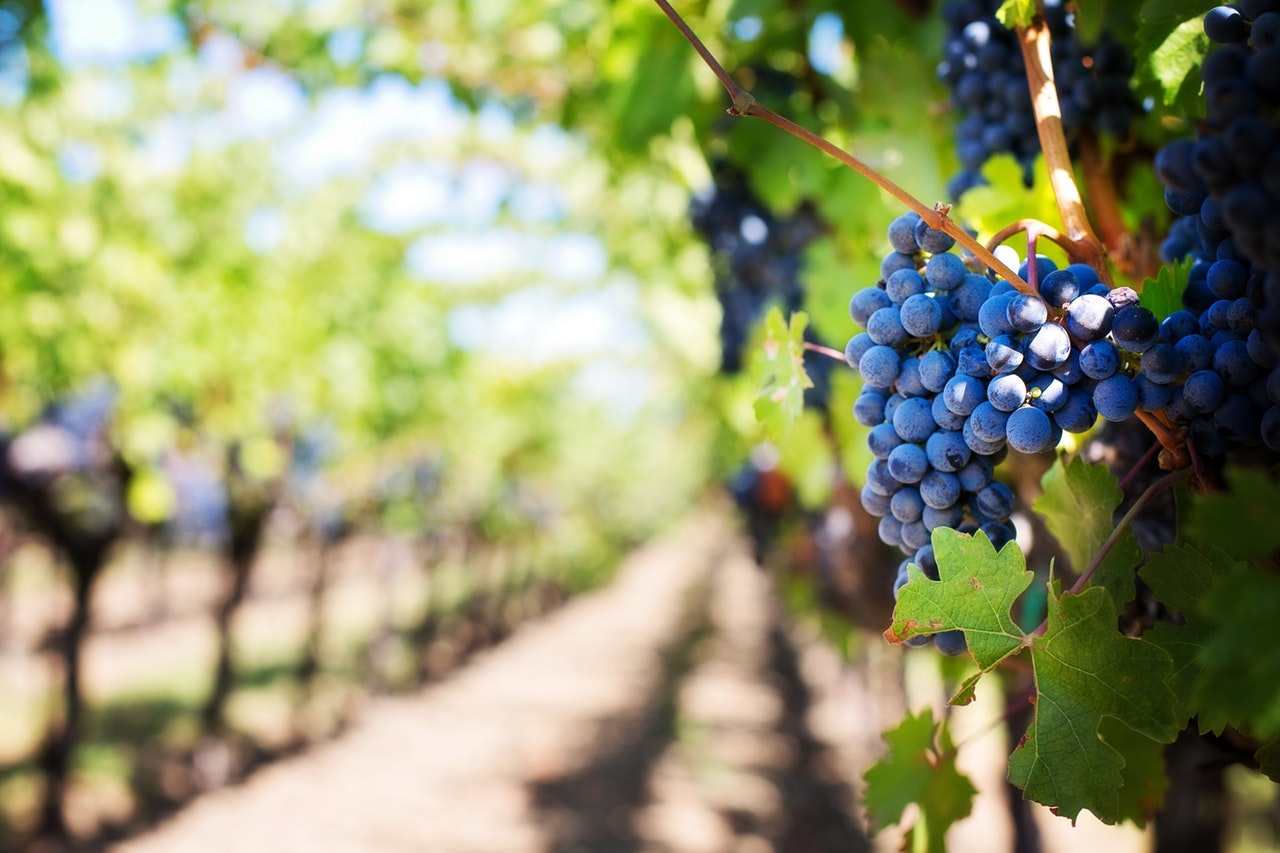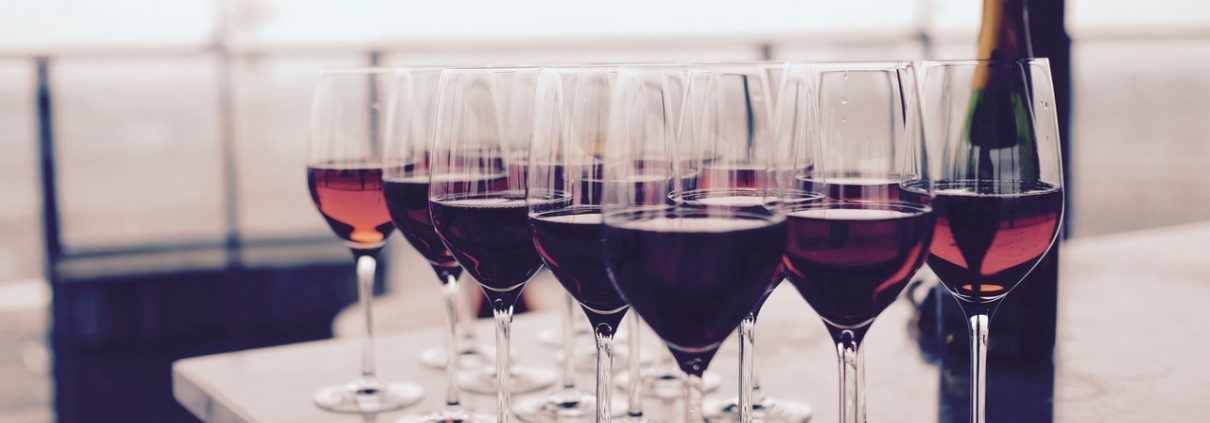如何開啟你的葡萄酒之旅Wine Basics – Part 1
茶文集葡萄酒入門
當你有興趣想要一探葡萄酒的世界時,你可能不知道該如何開始。 應該上課嗎? 應該加入一個品酒小組? 應該參觀一個酒莊? 應該買各種葡萄酒,開始抽樣飲用嗎?
其實沒有必要特別去遵循某些規則,把它想成有無限的選擇! 你的葡萄酒之旅會更寬廣自在。
雖然如此,還是有許多小訣竅,可以讓你在體驗葡萄酒時,可以更快的一窺堂奧。
- 尋找專業的人引導你 –
每一個新的旅程,都可從有經驗的“指導”中獲益。 一個有葡萄酒經驗的人可以引導你發現隱藏的寶藏,擴大你的葡萄酒知識的視野。 你可以試試當地的葡萄酒商、酒吧經營者、知識淵博的調酒師、葡萄酒講師、甚至是一個比你更了解葡萄酒的朋友。
- 閱讀關於葡萄酒的書籍 –
即使是滿心期盼開始的葡萄酒鑑賞新手,過於豐富的資訊可能有點壓力。 試著先找一些入門書籍,建立一些基礎觀念,再逐步隨著,雜誌、網站提供的意見或是評價,以及釀酒師,葡萄園,酒廠和成長地區的一切歷史觀點,來擴大你的知識領域。 當然,也有許多出版物,實際的提供了各類葡萄酒的介紹 – 就像這一系列的文章!
- 學習專有詞彙 –
通過閱讀葡萄酒出版物(書籍,雜誌,線上部落格等),您將能夠閱讀許多葡萄酒文章和評論。 這些葡萄酒相關的資訊,提供了一個悠閒的方式來學習葡萄酒的語言。 另外就是與商家的溝通,或是索取他們的目錄,也是建立葡萄酒詞彙,或是學習特定風格的葡萄酒和種植區域的良好方法。 通過了解與熟悉葡萄酒詞彙,你將會更容易表達你對葡萄酒的印象和偏好。
- 適時品味葡萄酒 –
這絕對是最令人愉快的部分! 品嚐、再品嚐、更多品嚐,是無可替代,也是確定您的葡萄酒口味和偏好的唯一方法。 為了比較,與學習,每次嘗試兩三款葡萄酒會更有幫助。建議與好朋友一同品嚐葡萄酒,不僅令人愉快,互相討論以及反饋意見,是十分有價值的。

- 善待自己的好酒 –
高品質的葡萄酒提供了品種(由特定的葡萄品種,如卡瓦內或夏多內製成的葡萄酒),一個成長的地區,或一個年份下,最生動和令人難忘的特質。 所以,有機會,就該嚐嚐你能買得起的最好的葡萄酒。 這樣,你會將你的味覺(或味道)的記憶開發到一個更獨特的境界。 找個機會,獎勵自己吧!
- 嘗試不熟悉或新奇的酒款 –
人生苦短,不要把自己限制在已經熟悉的葡萄酒款裡,例如夏多內(Chardonnay)或卡瓦內(Cabernet Sauvignon)。 找機會就品嚐一種你從未聽說過的葡萄酒。 這結果可能令人愉快,開闢了一條全新的葡萄酒探索之路 – 或者 – 你可能不喜歡它。 但無論哪種結果,你已經增加了自己在葡萄酒知識的另一種思維。
- 寫下你的印象 –
剛開始很難知道如何開始描述葡萄酒。 雖然很容易啜飲葡萄酒來判斷口味,但這可能是一種短暫的體驗,而且從長遠來看,這種體驗可能不會持續在你的“品味記憶”中。 出於這個原因,在你品嚐葡萄酒的時候做一些簡單的筆記是個好方法。 用言語表達你的想法,會挑戰你作出判斷及解決葡萄酒的不確定性,這樣留下你對葡萄酒的紀錄。有些賣酒專門店有幫助你紀錄品酒的筆記本,或是在網路上搜尋合適的APP,都可以幫你做很好的紀錄與整理。
- 享受自己 –
了解與學習葡萄酒絕不應該令人沮喪。 畢竟,品嘗的目標是享受葡萄酒。 別緊張!
- 參觀酒莊 –
如果你有機會,參觀酒莊,這將啟發你如何釀造葡萄酒。
- 有耐心 –
沒有人能在一天、一周甚至一個月內成為葡萄酒權威。 知識需要經驗,而經驗只有經過時間和耐心才能獲得。 即使是專家,總是有新的東西在陽光下。 幸運的是,這個旅程是開心的。
如何從葡萄開始?

如果你曾經看過一家餐館的酒單或瀏覽超市的葡萄酒陳列區,你知道有很多不同種類的葡萄酒。 幾百個葡萄品種被用來釀造各種的葡萄酒,它們有著不同的風味、個性和品質。 如果對葡萄的品種不內行,判斷葡萄酒是很困難的事情。
葡萄的特性最終決定了葡萄酒的特質。
雖然葡萄種類繁多,但只有一小部分葡萄(經典或高貴的葡萄品種)才能釀造出真正優質的葡萄酒。 對於紅酒,高貴的葡萄品種包括卡瓦內、梅洛、黑皮諾和希哈, 白葡萄酒包括夏多內、雷司令和白蘇維翁。 其他值得注意的是雖然不太特別的葡萄品種,包括品麗珠,內比奧羅,桑嬌維賽,普蘭尼洛和仙粉黛等紅葡萄酒; 以及諸如Gewurztraminer,各種類型的馬斯喀特,白比諾,灰皮諾,賽美蓉和維歐尼等白色。
品種葡萄酒主要或完全由一種葡萄品種製成。 指定的葡萄品種所需的最低百分比是由法律規定,因國家而異(或在美國各州)。 例如,加利福尼亞州的法律規定,葡萄酒中至少含有75%的葡萄酒。 因此,加利福尼亞州的梅洛必須至少有75%的梅洛葡萄,而加州的霞多麗則必須至少有75%的霞多麗葡萄。
在“新世界”,主要是美國,南美,澳大利亞,新西蘭和南非(歐洲以外),大多數葡萄酒都是以生產葡萄的葡萄命名的。 然而,來自法國,意大利,葡萄牙和西班牙等“舊世界”國家的葡萄酒通常是以生產葡萄的地區命名的。 所以,由夏多內葡萄釀造的加利福尼亞葡萄酒被稱為夏多內(Chardonnay),而由夏多內(Chardonnay)葡萄釀製的法國葡萄酒可能被稱為夏布利(Chablis)或Mersault(Mersault)等。
如果你對葡萄酒世界比較陌生,最好先探索一下由主要的葡萄品種釀製的葡萄酒。 因為這些葡萄酒的味道比那些較小、不知名的葡萄品種釀製的酒具備個性與特質,所以它們更有可能給你的味覺留下深刻的印象。
另外,當您品嚐時,請記住,葡萄酒是葡萄種植時的土壤氣候下的產物, 同樣的葡萄可以生產兩種口味完全不同的葡萄酒; 這一切都取決於每個葡萄園的位置、葡萄種植習慣(葡萄種植的方式,允許生產多少水果)、葡萄的年齡、釀酒師的技能和理念,以及釀酒的設備。
有很多不同的葡萄酒可以品嚐。 在接下來的幾節中,我們將解釋不同種類的葡萄酒的味道,以及世界上相關葡萄的種植地點。
DVT Wine Basics – Getting Started
As you set out to explore the world of wine, you might feel unsure about how to begin. Should you take a class? Join a wine-tasting group? Visit a winery? Buy a variety of wines and start sampling? There are no set rules you must follow; think of it as having unlimited choices! The following tips to help you get started on your wine journey.
- Find Someone Knowledgeable to Guide You – Every new journey benefits from the presence of an experienced “guide”. An person who is experienced with wine can guide you to discovering hidden gems and expanding the horizons of your wine knowledge. You could try your local wine merchant, a wine-bar operator, a knowledgeable bartender, a wine educator, or even a friend who knows more about wine than you do.
- Read Books on Wine – The wealth of available information can be a little overwhelming to even the most eager beginning wine connoisseur. With books, magazines, newsletters, and Web sites offering opinions, evaluations, criticisms, and historical perspectives on everything from winemakers, vineyards, wineries and growing regions, you should have no trouble establishing a foundation for learning. There are also many publications that actually provide introductions to wine – like this series of articles!
- Learn the language – By reading wine publications (books, magazines, online blogs, etc.), you will be able to read many wine articles and reviews. These wine-related materials provide a leisurely opportunity to learn the language of wine. Merchants’ newsletters and offering catalogs are also good sources for building a wine vocabulary, and learning about particular styles of wine and growing regions. By developing a broad wine vocabulary, you’ll find it easier to express your impressions and preferences about wine.
- Taste Wine When the Opportunity Allows – This is the enjoyable part! There’s no substitute for tasting, tasting, and more tasting. This is the only way to determine your wine tastes and preferences. Try a few wines at a time for the sake of comparison. Tasting wines with good friends is always a pleasure and their feedback should be valuable.
- Treat yourself to Good Wine – High quality wines provide the most vivid and memorable attributes of a varietal (a wine made from a specific grape variety, such as Cabernet Sauvignon or Chardonnay), a growing region, or a vintage. So, taste the best wine you can afford. That way, you’ll develop a more distinctive palate (or taste) memory. Reward yourself!
- Experiment with the Unfamiliar – Life is too short to restrict yourself to wines you are already familiar with, for example, Chardonnay or Cabernet Sauvignon. Take an opportunity to taste a wine you’ve never heard of. It may prove delightful, opening-up an entirely new avenue of wine exploration – or – you may not like it. Either way, you’ve added another dimension to your wine knowledge.
- Write Down Your Impressions – At first, it’s difficult to know how to start describing a wine. Although it’s easy to sip and swirl the wine to judge its flavors, this can be a fleeting experience, and one that may not last in your “taste memory” in the long run. For this reason, it’s a good idea to take some brief notes while you are sampling a wine. The act of committing your thoughts into words will challenge you to make judgments and resolve uncertainties about wines.
- Enjoy yourself – Learning about wine should never be frustrating. After all, the goal here is to increase your enjoyment of wine. Take it easy!
- Visit a Winery – If you have an opportunity, visit a winery, which will enlighten you as to how wine is made.
- Be Patient – No one becomes an authority in a day, a week, or even a month. Knowledge comes with experience, and experience is only gained with time and patience. And there’s always something new under the sun, even for the experts. Fortunately, this journey is rewarding.
It Starts with the Grapes
If you’ve ever glanced at a restaurant wine list or browsed the wine aisle of the grocery store, you know there are a lot of different kinds of wine out there. Several hundred grape varieties are used to make the world’s wines, resulting in different flavors, personalities, and qualities. The sheer variety can make choosing just one bottle a bit overwhelming, especially when they all look so inviting.
The traits of the grape ultimately determine the wine’s character.
Although many kinds of grapes are used to make wine, only a fraction (the classic or noble grape varieties) produce truly superior wines. For red wine, noble grape varieties include Cabernet Sauvignon, Merlot, Pinot Noir, and Syrah; for white, Chardonnay, Chenin Blanc, Riesling, and Sauvignon Blanc. Other noteworthy though less extraordinary grape varieties include such reds as Cabernet Franc, Nebbiolo, Sangiovese, Tempranillo, and Zinfandel; and such whites as Gewurztraminer, various types of Muscat, Pinot Blanc, Pinot Gris, Semillon, and Viognier.
A varietal wine is made primarily or exclusively from one grape variety.
The minimum required percentage of the named grape is regulated by law and differs from country to country (or from state to state in the United States). California law, for example, requires that a varietal wine contain at least 75% of the grape named on the label. Therefore, a California Merlot must be at least 75% Merlot grapes, and a California Chardonnay must be at least 75% Chardonnay grapes.
In the “New World,” essentially the United States, South America, Australia, New Zealand, and South Africa (outside Europe), most wines are named for the grapes from which they are produced. However, wines from “Old World” countries like France, Italy, Portugal, and Spain are usually named for the region in which the grapes were produced. So, a California wine made from Chardonnay grapes is labeled Chardonnay, but a French wine made from Chardonnay grapes might be called Chablis or Mersault (among other names), depending on the growing area.
If you are relatively new to the world of wine, it’s best to explore the principal varietal wines first. Because these wines have a stronger flavor “personality” than those of lesser, more obscure varietals, they’re more likely to make a lasting impression on your palate.
As you taste, keep in mind that wine grapes are products of the soil and climate of the vineyard in which they are grown; the same grapes can produce two wines that taste completely different; it all depends on where each vineyard is located. Viticulture practices (the way the vines are tended and how much fruit they are allowed to produce), the vines’ age, the winemaker’s skill and philosophy, and winery equipment also influence the taste of wines.
There are a lot of different wines out there to taste. In the next few sections we will explain the different varieties of wine in terms of taste, and where in the world the related grapes are grown.


